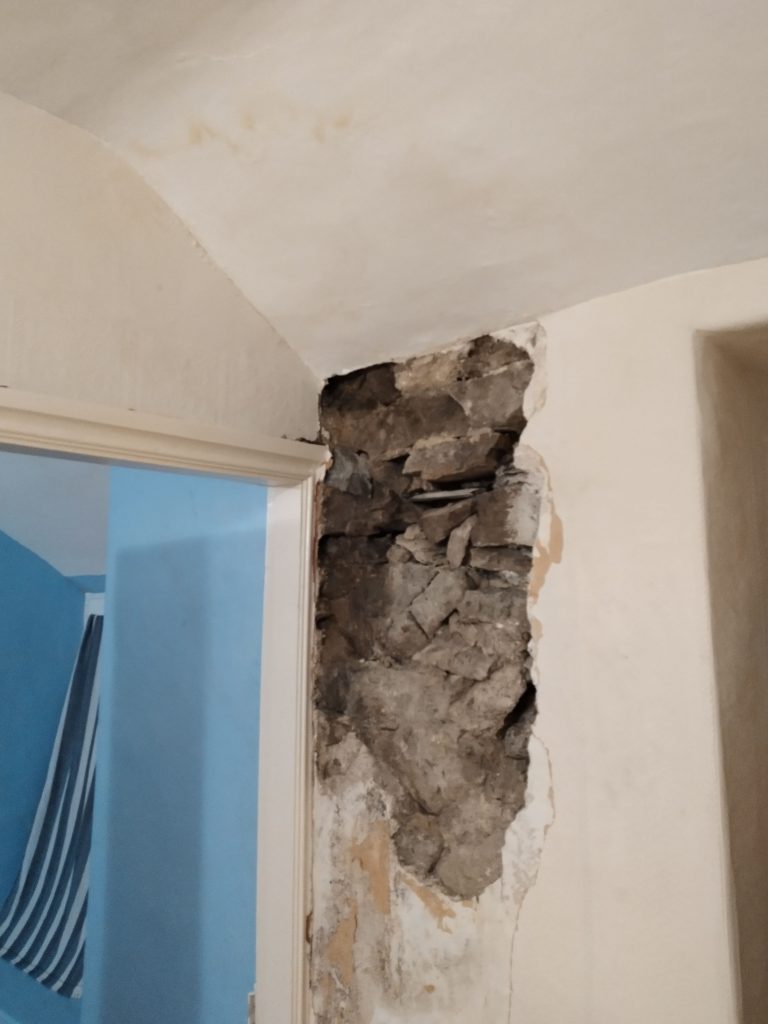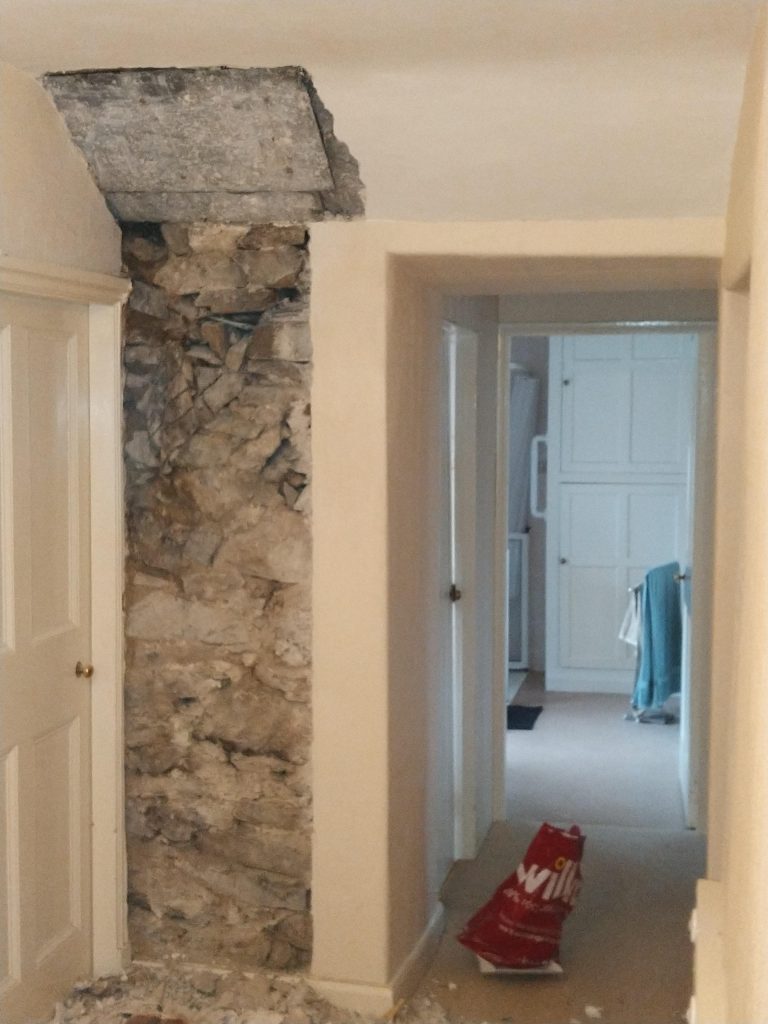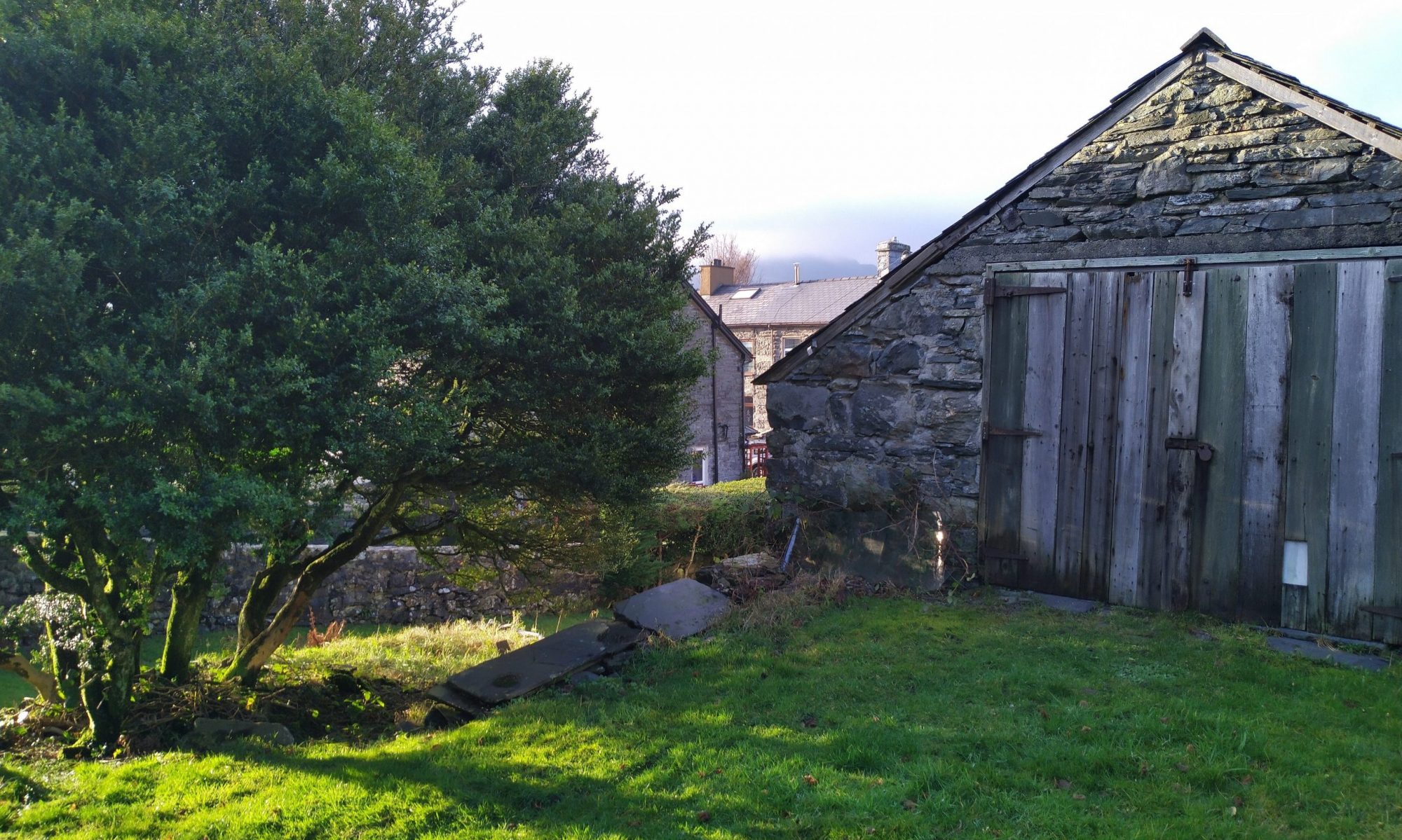A problem with the roof was always my worse case scenario. For a number of reasons, firstly it means wet is getting in and it is not something you can ignore or turn a blind eye to but secondly I have always believe that the equation is: roof problems = big bill.
So moving in during December, in an area that appears to rain a lot was always going to alert me quickly if I had a problem and bearing in mind the house had been left empty I suspect for 6 months, it was not long until my suspicions were alerted that I had a problem.
I originally turned a blind eye (or nose in this case) to the musty damp plaster smell after heavy rain and even every time I walked past the wall and saw the plaster bulging and being hollow when I tapped it, I just put it down to an old existing problem but once I started to get water staining in the corner of my bedroom ceiling I thought maybe I should at some point investigate.
It was actually an evening sat watching telly where I stumbled across the source of the problem. I had 30 minutes to kill between programs I was watching so in my true style I thought I would just “strip back the wallpaper” on the bulging area to see just how damp the plaster was. I was not expecting the plaster to come clean away from the wall in sheets with just the light leverage of the wallpaper scraper.

What immediately jumped out was the wet black patch and it was clear that this was not a new breach and I suspect that the water ingress had been occurring for a number of years.
The next thing was to wait for it to rain (which did not take long) and during this it was visible to see water running down the stone work and into the remaining plaster. The only thing to do now was to strip all of the plaster back until I got to solid plaster to assess the extent of the damage.

Once the area was stripped back, I could now let it dry out but also it was incredible to see the original stone work which actually formed part of the external wall of the house (as the area past this I was later to learn was a stone built extension which can not be dated at present).
Unfortunately, every time it dried out, we just had more rain so in order to stop it running down the stonework, I had to create an ingenious method involving a tea towel stuffed into the stones where the main water run was (to act as an absorption point and wick), a trowel forced into the mortar (to force the wick end of the tea towel out from the wall) then a large bucket on the floor to catch the steady run of drips. On a normal night I could easily collect between 1 and 2 litres of water, and to think prior to this, it was was running into the stonework and settling into the plaster and mortar or finding other run lines into the toilet wall and sometimes down into the kitchen ceiling cavity and also affecting the plaster by the back door!
So now I really knew the extent of the problem (and why various areas of damp were occurring and picked up in the building survey), it was a case of finding a roofing company but first of all I wanted to see if I could establish what was going on and once again it did not take long to see that the run line of the problem was immediately underneath a roof valley and by getting a clear view of the valley in question, I could see an overlapping patch on the bottom 1/ 3 of the valley which was directly over the internal wall that was affected.
The one thing I have learnt as I have embarked on this journey is the wide range of service you get from the skilled trade fraternity. It ranges from spot on where you get a quick acknowledgement to your request, maybe a pop in visit to assess the job and a quick quote turn around to the other end where you either get no reply or a bunch of messages saying “tomorrow” then no call and the need to follow it up (sometimes multiple times). Ultimately I always try to get at least 2 quotes for any work but the decision is not always priced based. You get a feel for the individual or company and I have learnt to feed in a small piece of work first knowing that there is more work to come if their price and quality is good.
Well on this occasion, both roofing companies validated my thoughts as the root of the problem and also had a good look around the roof for other issues, Both picked up on common findings which sort of means neither was pulling a fast one trying to feed in extra work that was not needed and both actually came down with photos of the roof where the additional issues were. The bad news though was that although the roof was replaced 30 years ago, the tiles used were high in pyrites and were now suffering from oxidation and were crumbling. A box full of tiles were bought down and shown to me as evidence of the problem and a quick trip up the scaffold tower to see the finished job and to point out other clearly visible areas of perishing tile clustered together made me happy that I was getting good advice. A conservative estimate was that the roof had between 3 and 5 years before the slates would need replacing. Another one for the budget!
So back to the original problem. It has now been fixed with the whole valley being replaced, the valley on the opposite side repaired (which we suspect had caused the plaster to fail in the middle bedroom as once again that was directly under that valley), about 30 perished tiles replaced and some flashing around the main chimney stack repaired.
Since the repair it has both rained and I have had snow and during the thaw I have not had a drop of water come through so fingers crossed the initial problem has now been fixed. I just need to save for the main roof to be retiled now!
